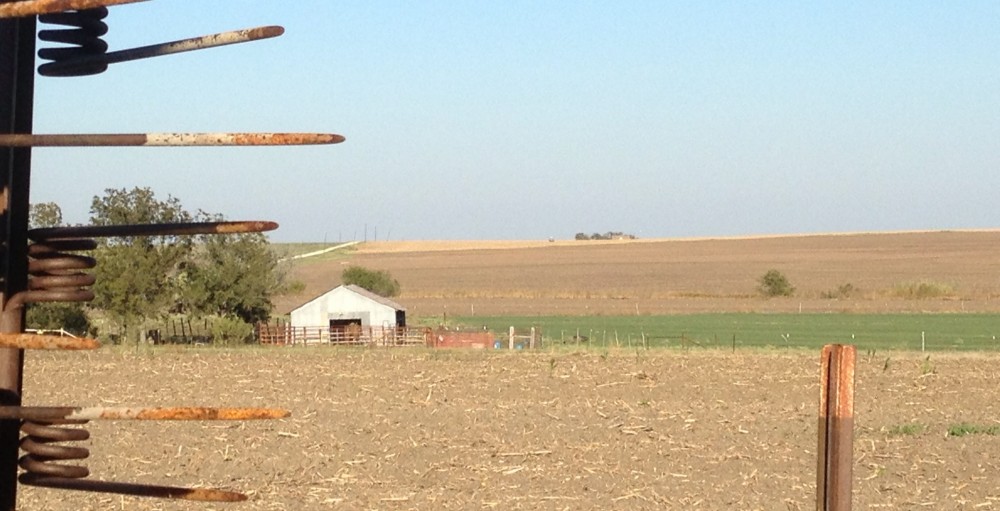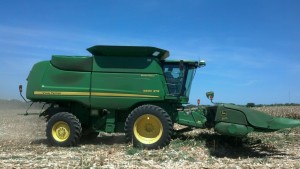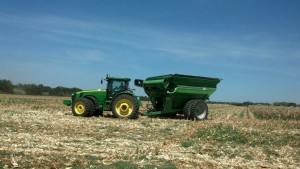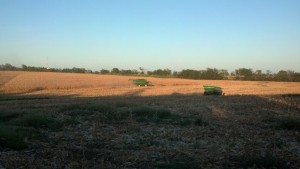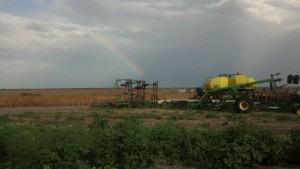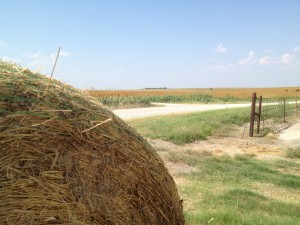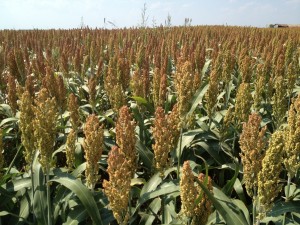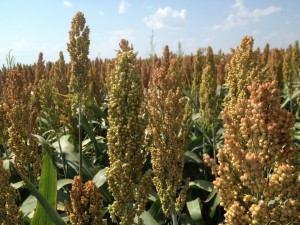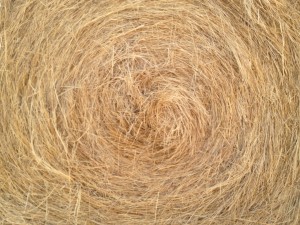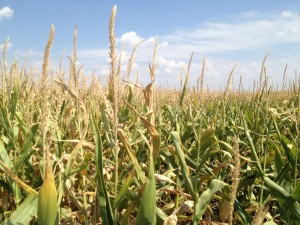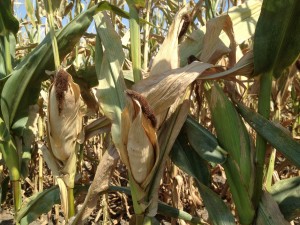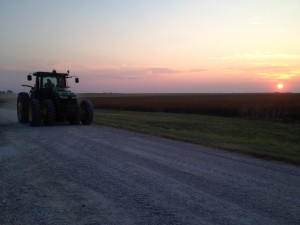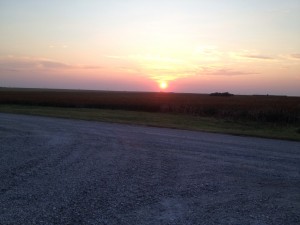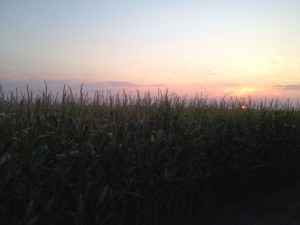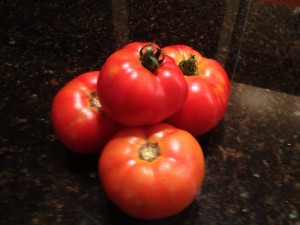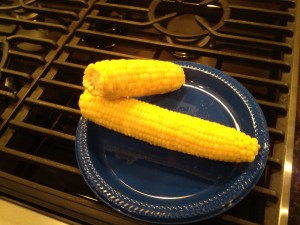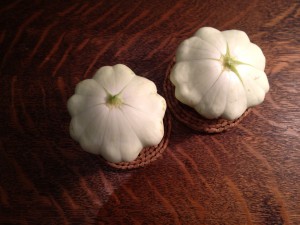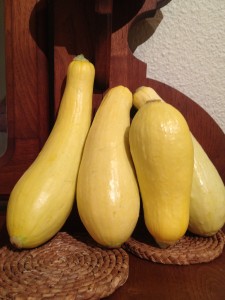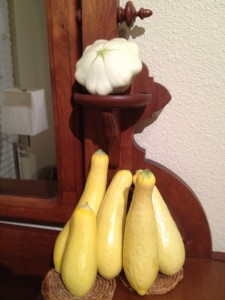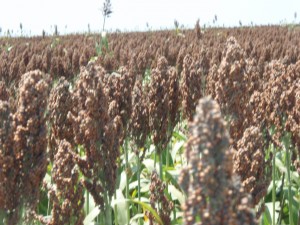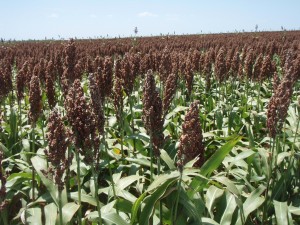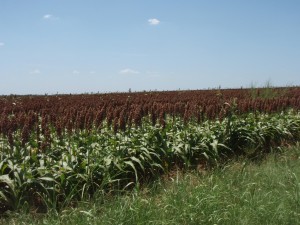The temperature today down at the farm is predicted to be 105 degrees Fahrenheit (40.6 degrees Celsius).
Uncle Joe sent some pictures over this way showing the corn harvest underway.
This first picture looks like Brother Charles in the combine heading out to fight the heat and rescue the yellow-gold seeds. That blue sky overhead sure is blue and those thin wisps of cloud a far piece away. Sun in store and plenty of it, I’d say. No need to worry about the rain. It’s time to get going and cutting and separating and loading and trucking and storing before the weather changes — as it always does. To paraphrase John Heywood’s 1546 Dialogue on the English Proverb of haymaking, “When the sun shines, make corn. Which is to say, take time when time comes, lest time steal away.” If Charles isn’t thinking that, he sure is doing it. Go Charles, get that corn!
Actually, the weather is perfect for the corn. Those “al dente” ears are basking and drying in their tropical paradise of heat. (A ripe ear of field corn has a small indentation or “dent” on the crown of each kernel – so the Italian phraseology for perfectly cooked pasta is somewhat appropriate for perfectly dried corn.) In this baking weather, it’s the people, not the corn, I worry about. When the digits triple, it’s best to rest, when you can, in the air-conditioned cab of the tractor and enjoy the view. That combine will be back to fill up the grain wagon. There will be plenty of work to do – always is; but if you can, take advantage of the cooling conveniences of modern farming. Ahh, the joys of technology . . .
. . . are short lived. Now, the brothers are in the midst of it. That combine is off in the distance chugging across the rows with the yellow-gold seeds mounding on top. There’s the tractor rolling down the hill with the grain wagon in tow, getting re-positioned for the next transfer. Across the cleared portions of the field, you can see the shadows lengthening. It’s been a productive day. Uncle Joe says the yields have been pretty good so far, as much as 100 bushels to the acre, which is an excellent crop in Central Texas. “Only thing,” Joe says, “is a big old hog.” Apparently, that Daddy Pig could see the harvest coming, and he organized all the other wild piggies for a last-night-in-the-field party. Those feral pigs can apparently eat a lot when they put their stomachs to it. Uncle Joe was not too pleased, and though he may say, “It is what it is,” if I were those pigs, I’d stay clear of one farmer for while.
Back at the main house, the corn field is waiting. Its turn is coming. In the sky, you can see someone is getting some relief from the heat. That’s a late afternoon thunder-boomer with its tail of rainbow crossing the Texas prairies. Not enough rain to slow the harvest, but a welcome, if brief, respite from the summer heat.
Maybe, Uncle Joe and Charles will break early and head back. I doubt it. You know what they say: Make corn while the sun shines. Or something like that. It’s an old phrase, but it works just fine today.
Grandpa Jim
